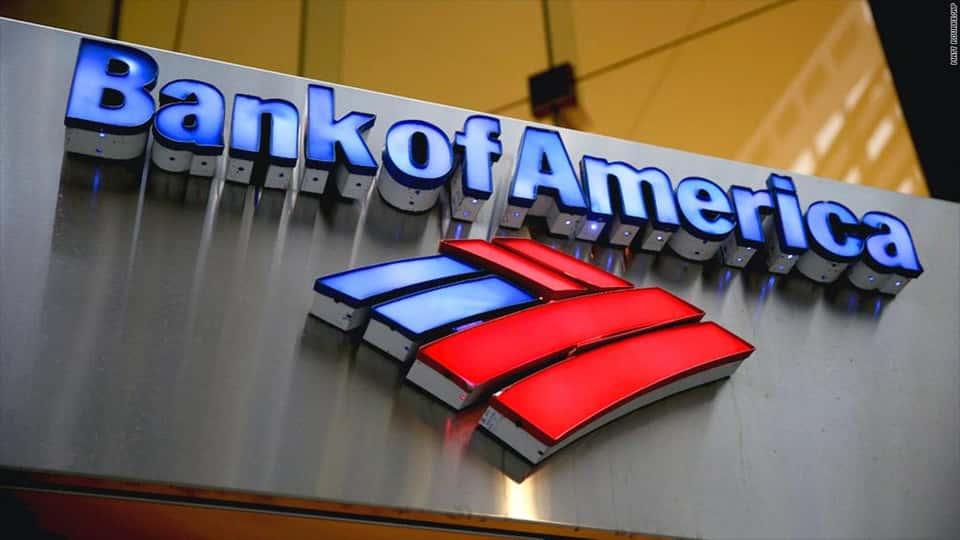The Federal Reserve’s aggressive interest rate hikes since last year to control inflation put immense pressure on the U.S. banking system, leading to the failure of three large regional banks earlier this year. These bank failures were the biggest since the global financial crisis of 2008.
Despite the measures taken by the financial regulators to restore stability to the banking system, investors and depositors were concerned about the strength of the financial system. However, there are signs of stabilization in the banking industry as deposit outflows are slowing down.
Deutsche Bank analysts said in a client note, “Our baseline does not anticipate a further intensification of banking stresses.” In this piece, I have discussed why waiting for a better entry point in Bank of America Corporation (BAC - Get Rating) could be prudent.
Last week, the Federal Reserve announced that all 23 banks included in the annual stress test weathered a severe recession scenario while continuing to lend to customers and corporations. The banks maintained the minimum capital levels despite the group’s estimated losses of $541 billion.
Michael Barr, Vice Chair for supervision at the Fed, said, “Today’s results confirm that the banking system remains strong and resilient.”
BAC surpassed analysts’ revenue and earnings estimates in the first quarter. Its EPS topped the consensus estimate by 14.6%, while its revenue beat the analyst estimates by 4.1%. BAC’s Chairman and CEO Brian Moynihan said, “Every business segment performed well as we grew client relationships and accounts organically and at a strong pace. Led by 13% year-over-year revenue growth, we delivered our seventh straight quarter of operating leverage.”
BAC’s CFO Alastair Borthwick said, “The value of responsible growth is evidenced again in our first quarter financial performance with 15% net income growth compared to Q1-22. Results were strong despite a challenging economic environment with market and banking sector volatility. Revenue growth reflected strong net interest income improvement coupled with one of our best quarters of sales and trading.”
“Asset quality remained strong with net charge-offs, while normalizing, still below pre-pandemic levels. We maintained strong liquidity, ending the quarter with $904 billion of Global Liquidity Sources. Regulatory capital improved to $184 billion, and our CET1 ratio is nearly 100 basis points above our current minimum requirements. Capital strength allowed us to return $4 billion back to shareholders, and we continued to invest in our people and businesses,” he added.
According to the Federal Deposit Insurance Corporation (FDIC), BAC was left with $109 billion in paper losses at the end of the first quarter due to its decision to invest heavily in the U.S. government bonds market. The amount is significantly higher than its peers’ unrealized bond market losses.
BAC finds itself in this situation because it had decided to invest most of its $670 billion pandemic-era deposits into debt markets when bonds traded at record-high prices and lower yields.
BAC’s stock has gained 2.1% in price over the past three months, while it has declined 7.5% over the past year to close the last trading session at $29.20.
Here’s what could influence BAC’s performance in the upcoming months:
Robust Financials
BAC’s net interest income for the first quarter ended March 31, 2023, increased 24.9% year-over-year to $14.45 billion. Its noninterest income rose 1.3% year-over-year to $11.81 billion. The company’s net income applicable to common shareholders increased 16% over the prior-year quarter to $7.66 billion. Also, its EPS came in at $0.94, representing an increase of 17.5% year-over-year.
Its return on average assets came in at 1.07%, compared to 0.89% in the prior-year quarter. In addition, its return on average tangible common shareholders’ equity came in at 17.38%, compared to 15.51% in the year-ago period.
Mixed Analyst Estimates
Analysts expect BAC’s EPS and revenue for fiscal 2023 to increase 6.5% and 6% year-over-year to $3.40 and $100.60 billion, respectively. Its EPS and revenue for fiscal 2024 are expected to decline 1.3% and 0.9% year-over-year to $3.35 and $99.70 billion, respectively.
For the quarter that ended June 30, 2023, BAC’s EPS and revenue are expected to increase 16.7% and 10.9% year-over-year to $0.85 and $25.15 billion, respectively.
Mixed Valuation
In terms of forward non-GAAP P/E, BAC’s 8.60x is 3.3% lower than the 8.89x industry average. Likewise, its 0.87x forward Price/Book is 9.1% lower than the 0.96x industry average.
On the other hand, in terms of forward Price/Sales, BAC’s 2.31x is 4.9% higher than the 2.21x industry average.
Mixed Profitability
BAC’s 11.02% trailing-12-month Return on Common Equity is 0.8% lower than the 11.10% industry average. Likewise, its 0.90% trailing-12-month Return on Total Assets is 20% lower than the 1.12% industry average.
On the other hand, the stock’s 30.28% trailing-12-month net income margin is 17% higher than the industry average of 25.87%.
POWR Ratings Reflect Uncertainty
BAC has an overall rating of C, equating to a Neutral in our POWR Ratings system. The POWR Ratings are calculated by considering 118 different factors, each weighted to an optimal degree.
Our proprietary rating system also evaluates each stock based on eight distinct categories. BAC has a C grade for Quality, consistent with its mixed profitability. Its mixed analyst estimates justify its C grade for Sentiment.
It has a C grade for Stability, in sync with its 1.38 beta.
BAC is ranked first out of 10 stocks in the Money Center Banks industry. Click here to access BAC’s Growth, Value, and Momentum ratings.
Bottom Line
BAC is stuck with low-yielding long-dated securities, which despite possessing high credit ratings, could affect its earnings as most of these government bonds yield around 2% at a time when the benchmark interest rate is 5%. The bank will likely avoid liquidity issues like the collapsed banks as it has substantial cash reserves.
Given the mixed analyst estimates and profitability, it could be wise to wait for a better entry point in the stock.
How Does Bank of America Corporation (BAC) Stack Up Against Its Peers?
BAC has an overall POWR Rating of C, which equates to a neutral rating. Therefore, you might want to consider investing in Foreign Banks stocks with an A (Strong Buy) or B (Buy) rating, such as Banco BBVA Argentina S.A. (BBAR - Get Rating), KB Financial Group Inc. (KB - Get Rating), and Banco Bilbao Vizcaya Argentaria, S.A. (BBVA - Get Rating).
Is the Bear Market Over?
43 year investment veteran Steve Reitmeister shares his updated stock market outlook & top picks for the rest of 2023. Spoiler Alert: Steve still believes bear case most likely.
Get Stock Market Outlook & Top Picks >
Want More Great Investing Ideas?
BAC shares were trading at $29.20 per share on Tuesday morning, up $0.51 (+1.78%). Year-to-date, BAC has declined -10.56%, versus a 16.92% rise in the benchmark S&P 500 index during the same period.
About the Author: Dipanjan Banchur

Since he was in grade school, Dipanjan was interested in the stock market. This led to him obtaining a master’s degree in Finance and Accounting. Currently, as an investment analyst and financial journalist, Dipanjan has a strong interest in reading and analyzing emerging trends in financial markets. More...
More Resources for the Stocks in this Article
| Ticker | POWR Rating | Industry Rank | Rank in Industry |
| BAC | Get Rating | Get Rating | Get Rating |
| BBAR | Get Rating | Get Rating | Get Rating |
| KB | Get Rating | Get Rating | Get Rating |
| BBVA | Get Rating | Get Rating | Get Rating |






